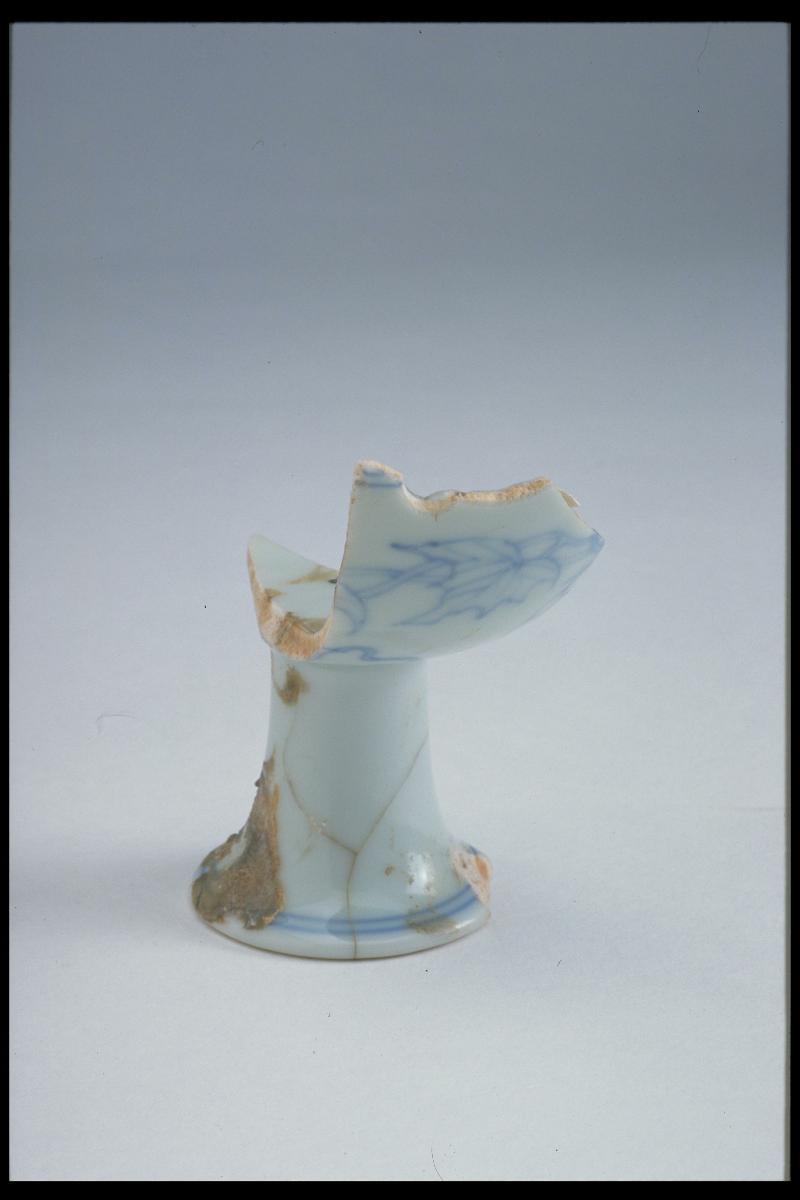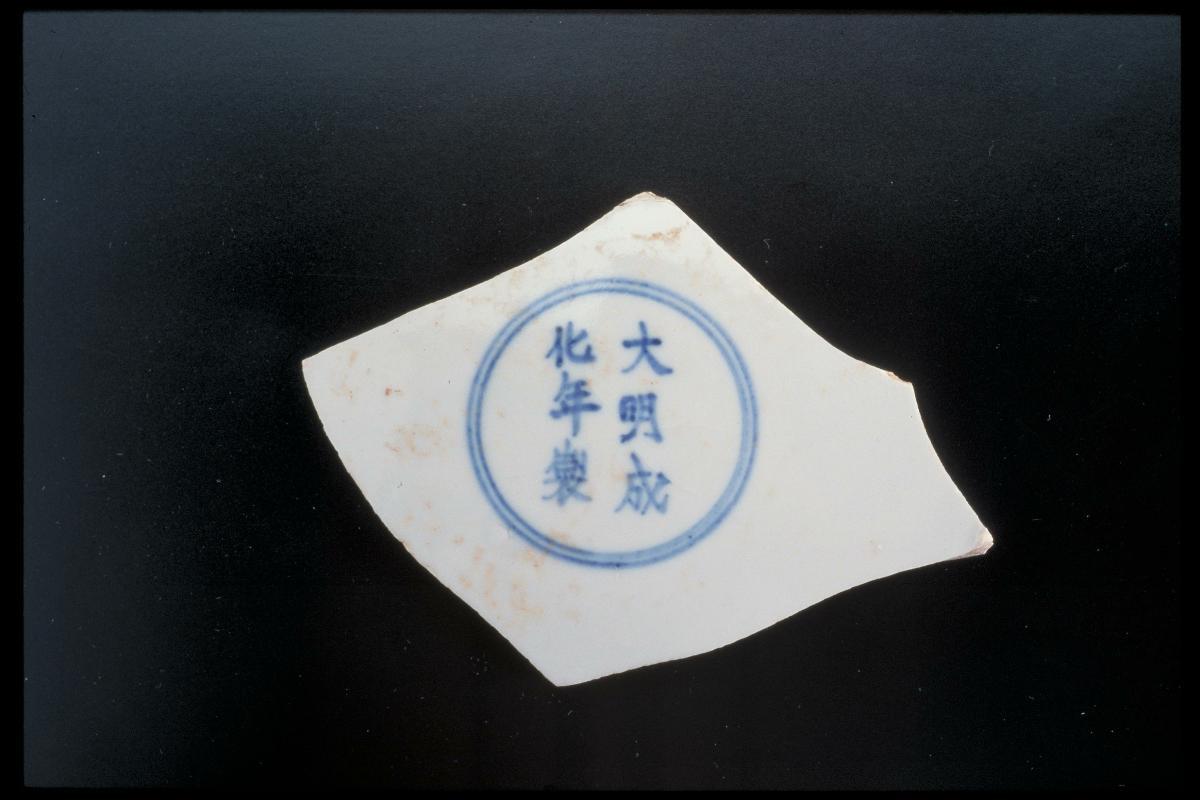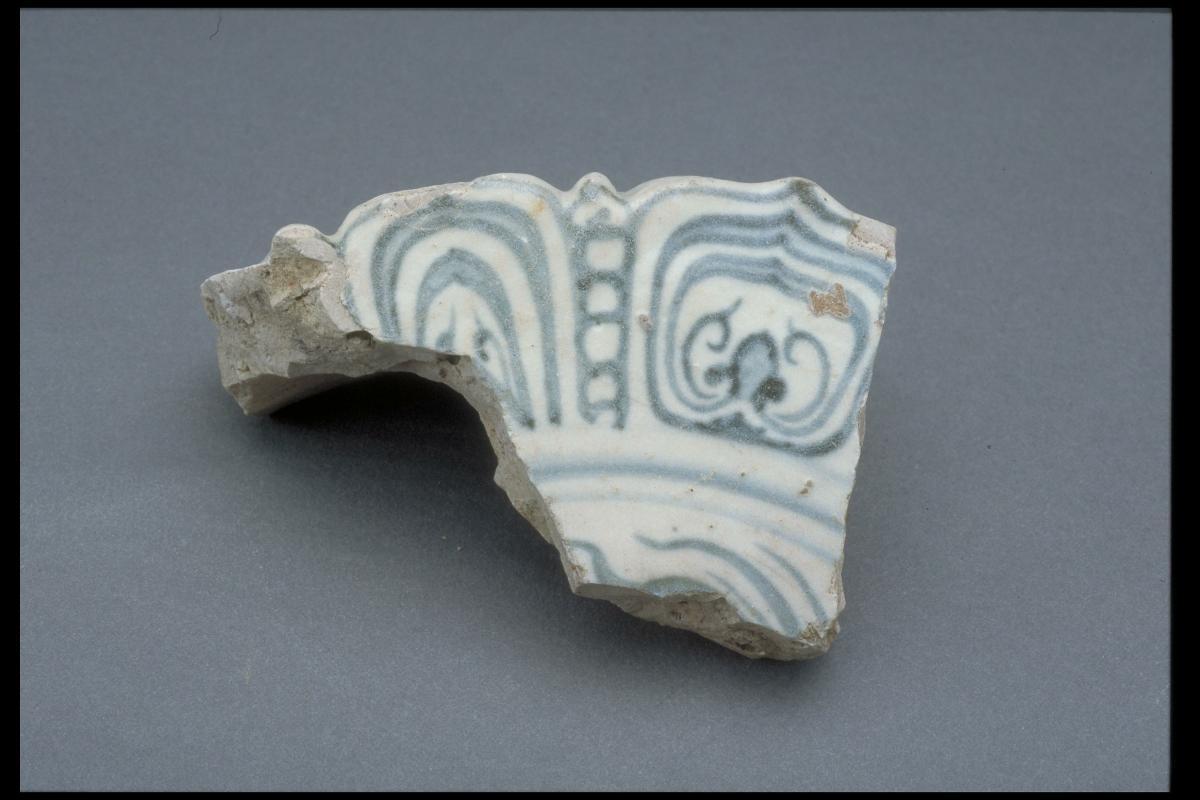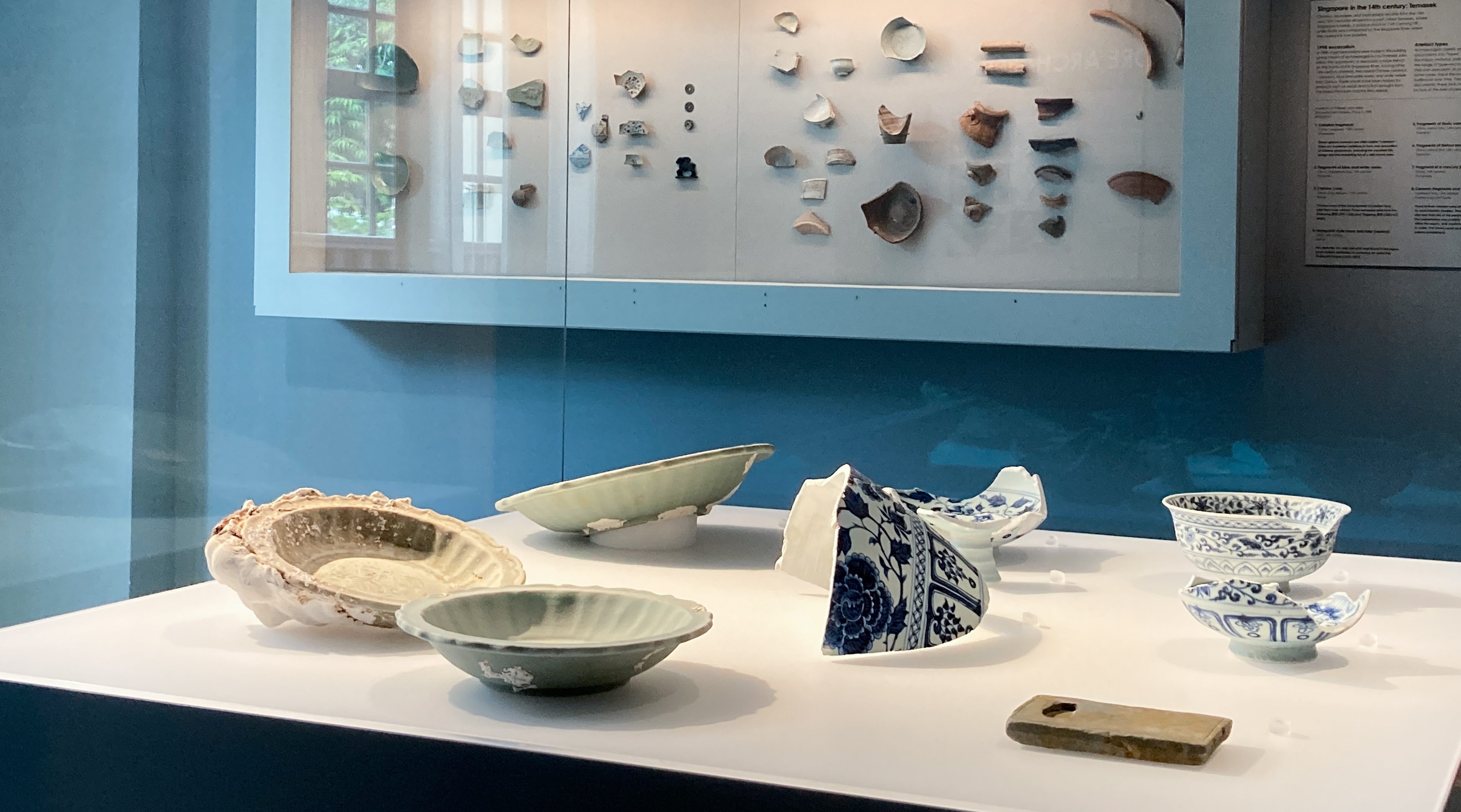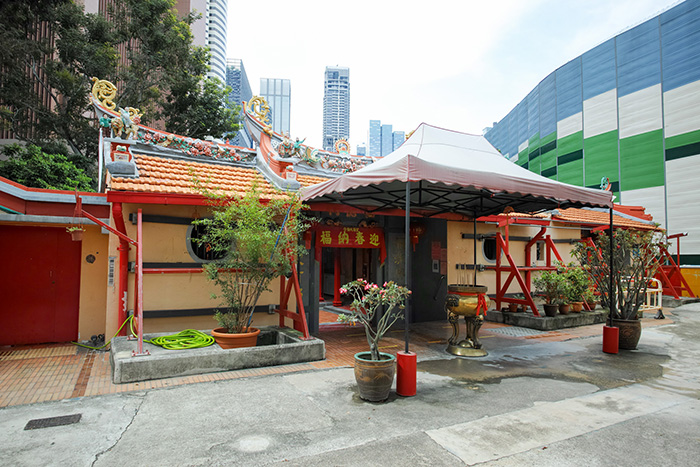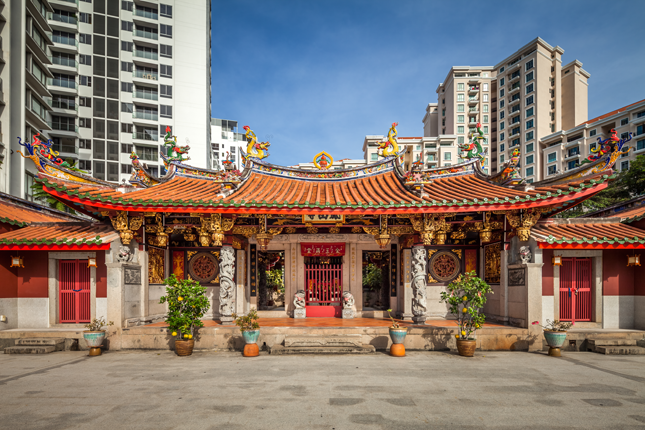This shard from the Chenghua period (1465-1487), with doucai decoration, is one of seven, recovered from the imperial kiln in Jingdezhen. This group of shards comprise sections of bowls, stem cups, and jars. Ceramic pieces that failed to pass the strict quality control of the imperial court were broken to prevent them from being used or copied. Covered with a clear smooth glaze, these incredibly thinly potted shards were a measure of the technical brilliance of the potters. This piece features the head of a ruyi scepter, a popular ornamental motif during the Ming dynasty (1368-1644) . Ruyi literally means 'as you wish' and was the name of a scepter first popular in the Six Dynasties period (220-589 CE). Ruyi scepters were symbolic of many blessings, especially long life and good fortune.





